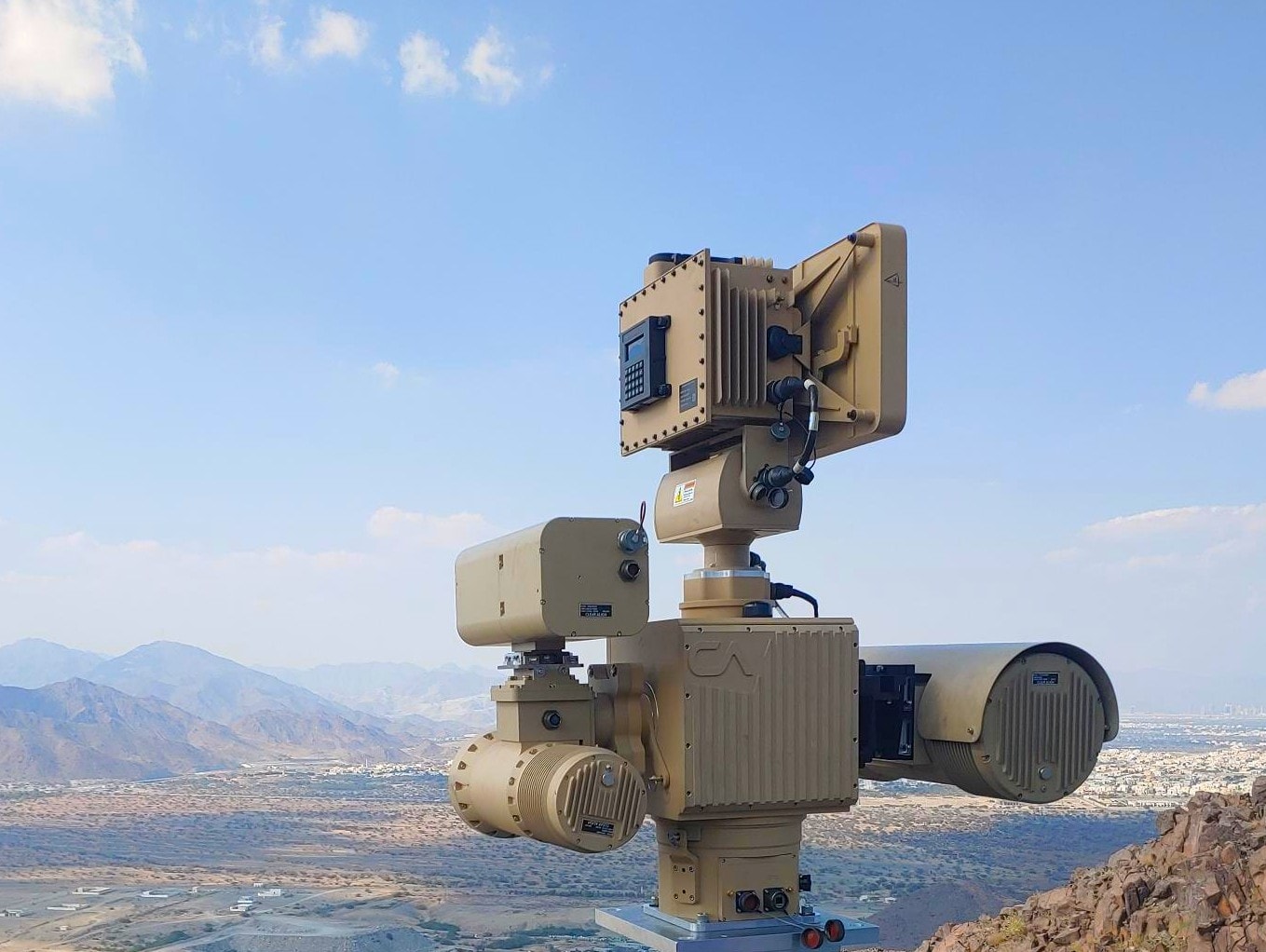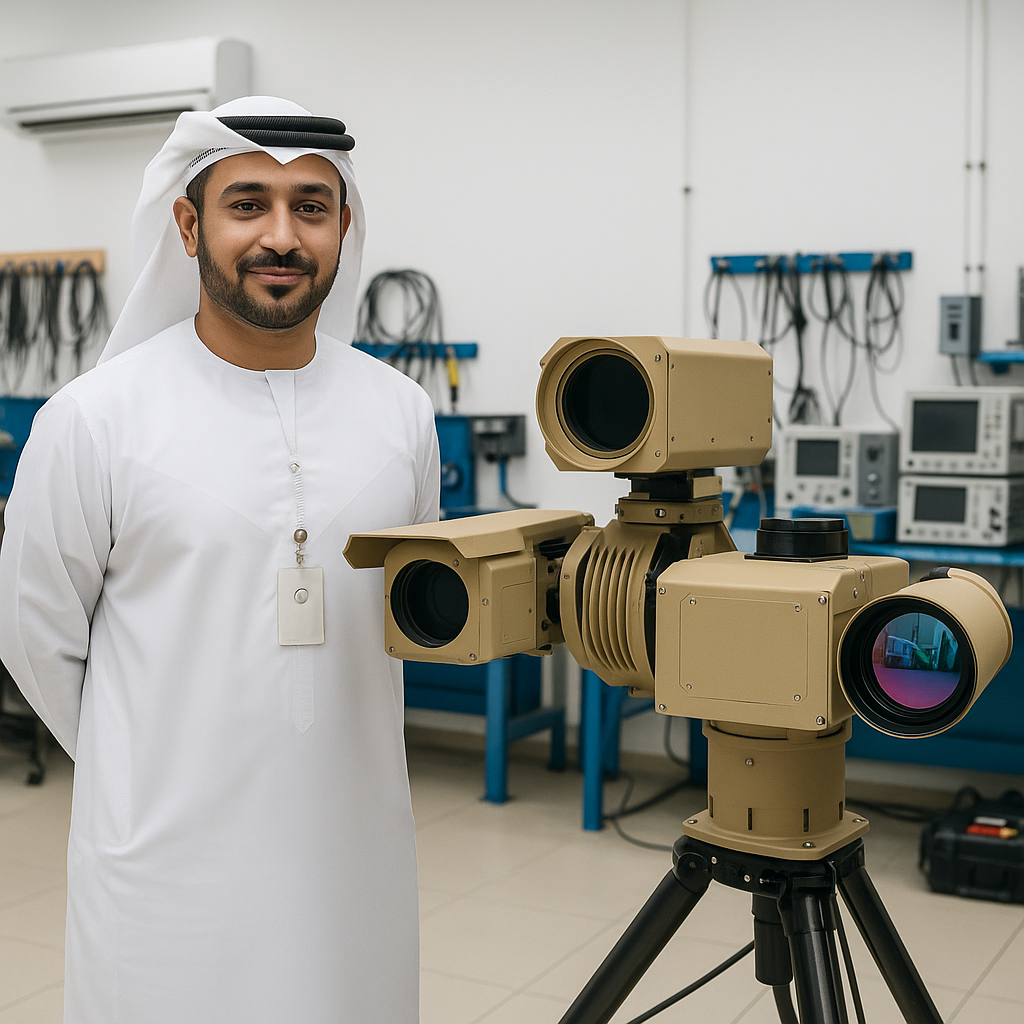
EO/IR sensors typically operate in multiple bands, including the visible, shortwave infrared (SWIR), midwave infrared (MWIR), and longwave infrared (LWIR) bands— operating as passive non-emitting sensors and are not affected by counter-radar technologies. These imaging systems can detect targets with visible light as well as in the bands of the infrared spectrum, providing high-resolution imaging in contested environments with real-time display of information available for enhanced situational awareness. They detect subtle heat signature differences and can maintain fidelity in complex terrain where radar returns may be cluttered and ambiguous. EO/IR sensor systems can operate autonomously or as part of integrated defense networks, adapting to complex operational environments such as military, critical infrastructure, and maritime domains.
EO/IR has become a critical component of modern warfare from unmanned aircraft systems (UAS) and airborne platforms performing persistent air and airspace surveillance, to armored fighting vehicles integrating thermal imagers for rapid target acquisition and 360-degree situational awareness and risk assessment. EO/IR systems are known for their advanced features and capabilities, such as high-resolution imaging, sensor fusion, and wide field-of-view sensors. These advancements result in improved performance over legacy solutions, especially when operating in challenging conditions or diverse environments. New systems are being developed by industry leaders like Lockheed Martin to address evolving threats and enhance airspace awareness. The creation of innovative EO/IR technologies addresses different aspects of modern warfare, including detection, tracking, and situational awareness. Coupled with AI-driven automatic target recognition, these systems provide valuable intelligence that radar simply cannot match.
The next decade will see EO/IR become the primary “first shot enabler”, particularly in the Middle East, Indo-Pacific, and European theaters, where adversaries deploy advanced radar countermeasures. For defense forces and allied militaries, investment in EO/IR is not optional—it is a strategic imperative. EO/IR systems offer advantages across different aspects of detection, targeting, and situational awareness, making them essential for modern defense operations.
Evolution of Modern Surveillance Systems
The landscape of surveillance and security has been fundamentally reshaped by the rapid advancement of technology. Electro-Optical/Infrared (EO/IR) systems now stand at the forefront of this transformation, redefining how military, law enforcement, and border agencies achieve situational awareness.
Unlike traditional surveillance tools, EO/IR systems excel in detecting and tracking intrusions in complex environments, providing operators with real-time intelligence and a decisive edge in both urban and remote settings.
The integration of artificial intelligence (AI) and machine learning (ML) has further elevated the capabilities of EO/IR systems. These advanced technologies enable automated detection, tracking, and classification of targets, reducing the need for constant human intervention and minimizing the risk of fatigue and fog of war, creating an oversight. Better integration of EO/IR sensors with other systems, through standardized interfaces and merging sensor data, enhances situational awareness and enables real-time information sharing across platforms. As a result, EO/IR systems can operate efficiently across multiple platforms and in different locations, adapting to new challenges and evolving threats with remarkable agility. Whether deployed for border security, military reconnaissance, or critical infrastructure protection, EO/IR technologies are now essential for organizations focused on maintaining security and operational superiority in an increasingly complex world.
The Core Advantages of EO/IR Over Radar
EO/IR systems offer a suite of advantages that make them indispensable in today’s defense landscape, particularly when it comes to counter-unmanned aerial system (C-UAS) operations. Unlike radar, which can struggle to detect small, low-flying drones, EO/IR systems leverage advanced infrared cameras and electro-optical sensors to identify and track these elusive targets with precision. Their ability to operate passively means they do not emit signals that could reveal their position, providing a significant tactical advantage in contested environments.
The versatility of EO/IR systems extends to their performance in adverse conditions—such as darkness, haze, or smoke. High-resolution imaging from EO/IR cameras allows for rapid and accurate identification, supporting faster decision-making and more effective defense. As a senior product manager at a leading defense firm notes, “EO/IR systems have become an essential tool in our arsenal, providing unparalleled situational awareness and risk detection capabilities.” With their superior detection abilities and adaptability, EO/IR systems are increasingly the preferred choice for defense forces seeking to counter modern aerial intrusions and enhance overall force protection.
Infrared Camera Technology: Unlocking the Invisible Spectrum
Infrared camera technology has revolutionized the way organizations approach surveillance, detection, and defense. Modern thermal imaging and infrared cameras are now widely used across military applications, law enforcement agencies, and governments across all domains, offering the ability to detect heat signatures not visible to the naked eye. Handheld thermal imaging cameras, in particular, have become invaluable tools for field operators, enabling them to see through darkness, smoke, and adverse weather conditions—capabilities that are critical for situational awareness and tracking enemy movement. To ensure these cameras perform reliably and effectively in demanding scenarios, adherence to performance standards—such as those developed by NIST and other organizations—is essential, especially for applications like firefighting and emergency response.

In the maritime environment, infrared cameras play a pivotal role in ship self-defense providing navy ships with an extra layer of security against potential adversaries. As highlighted by a chief technology officer at a leading infrared camera manufacturer, “Infrared camera technology has revolutionized the way we approach surveillance and identification of intruders and providing unparalleled capabilities in low-light environments.” The continued evolution of thermal cameras and infrared sensors ensures that military and security forces remain equipped to detect, identify, and respond to adaptive adversaries with unmatched speed and accuracy.
Signal Processing and Analysis: The Hidden Engine of EO/IR Superiority
At the heart of EO/IR system performance lies advanced signal processing and analysis. These technologies are the engines that enable EO/IR sensors to detect, track, and classify targets in real time, even in the most demanding environments. By leveraging cutting-edge processing technologies, EO/IR systems can filter out noise, enhance image clarity, and extract actionable intelligence from vast streams of data.
The integration of AI and ML has further propelled EO/IR capabilities, allowing systems to adapt to changing adversarial tactics and improve accuracy with minimal human intervention. Advanced algorithms enable EO/IR platforms to distinguish between genuine threats and false alarms, ensuring that operators can focus on real targets. Developments in image enhancement have extended the range and improved the overall performance of EO/IR systems, making them more effective than ever. As the demand for superior situational awareness and layered defense grows, continued innovation and analysis will remain central to the dominance of EO/IR technologies in the modern battlespace.
Night Vision Capabilities: Extending Operational Reach After Dark
Vision even at night, has dramatically expanded the operational envelope for military and law enforcement agencies, enabling missions to continue seamlessly after sunset. By harnessing advanced technologies such as thermal imaging electro-optical sensors, personnel can maintain high levels of situational awareness and force protection even in total darkness. Thermal imaging cameras have become indispensable for frontline operators, allowing them to detect, identify, and track drone threats and maritime surface threats that would otherwise remain hidden.
AI/ML in Intelligence Surveillance and Reconnaissance (ISR): Smarter, Faster, More Accurate
AI is rapidly transforming ISR, making systems smarter, faster, and more accurate than ever before. By leveraging machine learning and advanced processing technologies, AI-powered platforms can analyze data from multiple platforms—including electro-optical sensors, infrared cameras, and radar—to create a comprehensive situational awareness picture. This enables operators to detect and track potential threats in real time, even as adversaries employ increasingly sophisticated tactics.
AI-driven systems significantly reduce the need for human intervention, minimizing the risk of false alarms and allowing personnel to focus on genuine threats. The integration of AI and ML with electro optical and infrared sensors improves overall system performance, and ensures rapid more intelligent responses to emerging or new threats. As the Chief Technology Officer of a leading company notes, “AI is the key to unlocking the full potential of surveillance systems, enabling us to stay ahead of evolving threats and protect our people and assets more effectively.” With ongoing advancements in AI, imaging technologies will continue to deliver superior tracking, and predictive analytics, ensuring robust protection against potential threats in any environment.
C-UAS Systems: Countering the Drone Threat
The proliferation of unmanned aerial systems (UAS) has introduced a new dimension of risk to both military and civilian operations, making effective Counter-Unmanned Ariel Systems(C-UAS) essential for modern defense. These advanced systems combine multiple sensors—including radar, electro optical cameras, and infrared cameras—to provide comprehensive detection, tracking and monitoring of UAS. By integrating these technologies with sophisticated command and control systems, counter drone platforms can detect, track, and neutralize unmanned aerial threats in real time, even in complex situations where false alarms are a concern.
Recent developments in C-UAS technology have focused on extending range, increasing accuracy, and enhancing the ability to operate seamlessly in challenging conditions. This layered defense approach ensures that allied warfighters and civilian populations are protected from the growing threat posed by enemy drones. As the drone landscape continues to evolve, C-UAS systems will remain at the forefront of force protection, leveraging the latest in sensing and control technologies to safeguard critical assets and maintain airspace security.
Future Developments in EO/IR Technology: Shaping Tomorrow’s Battlespace
The future of EO/IR technology promises to further revolutionize military operations, delivering unprecedented levels of situational awareness and targeting capability. As sensor technology and signal processing continue to advance, EO/IR systems are achieving longer sensing ranges, improved accuracy, and enhanced performance in demanding environments. Recent developments to integrate AI and ML, enable modern systems to adapt to new threats and provide better predictive analytics for faster and more informed decision-making.
According to the Product Manager at Lockheed Martin, “EO/IR technology is a key enabler of modern military operations, providing the situational awareness and targeting capabilities that our warfighters need to succeed.” Looking ahead, the convergence of EO/IR with emerging trends such as the networking of "systems of systems" will enable even more sophisticated capabilities, including real-time data sharing across multiple platforms and improved target recognition. As the battlespace continues to evolve, EO/IR technology will play an increasingly vital role in shaping the future of defense, ensuring that military forces remain agile, informed, and ready to counter any threat.